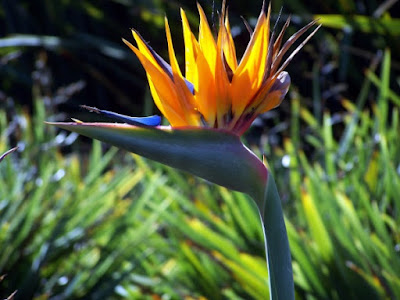Bird-of-Paradise Plant Bothers Evolutionists
There is a plant known as the bird-of-paradise or crane flower (genus Strelitzia), which has a passing resemblance to the head of a bird. A bird exists by the same name, but that has no relevance except maybe for some similar color. You can find these perennial plants in South Africa and they can grow rather large. (Two species are hardy houseplants.) Strelitzia have a clever way of pollinating: when sunbirds perch on them to sip on the nectar, the flowers open to cover their feet with pollen. But that's not what bothers Darwinists.
The bright orange coloring is due to pigment. In 2009, researchers were finally able to determine the source of the pigment. It is bilirubin, which is not found in the plant kingdom. No wonder the source was elusive. What is problematic for Darwinists is how bilirubin (which gives that yellowish tinge to that place on your arm when your cousin hit you, and also when people have jaundice) came to be in plants. Instead of considering that the Master Engineer was involved in this, they tried mighty hard to work in some connection with evolution. Gotta keep the faith, baby!
 |
| Credit: RGBStock / melodi2 |
Aside from the widely recognized shape of their flowers, which resemble the head of a tropical bird, bird-of-paradise plants (Strelitzia spp.) are admired for their vibrant floral coloration. The brilliant orange is even more intense on the furry outside of their seeds, and is able to persist for decades,1 unlike most plant pigments, which degrade rapidly after cell death.To read the rest, click on "Bird-of-paradise flower pigment surprise".
Researchers, eager to investigate the source of such long-lasting and intense colour, set about to try to identify the pigment.